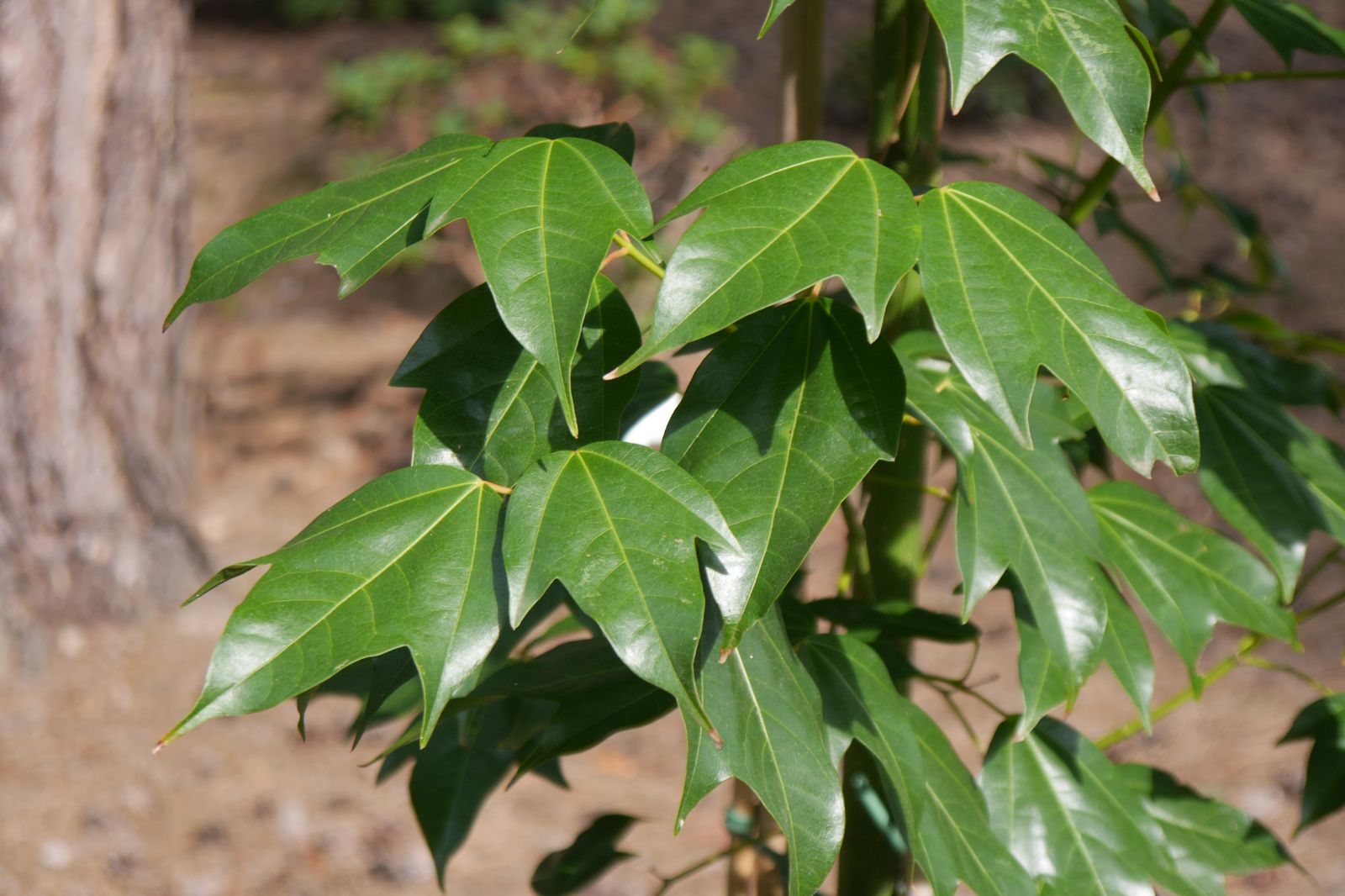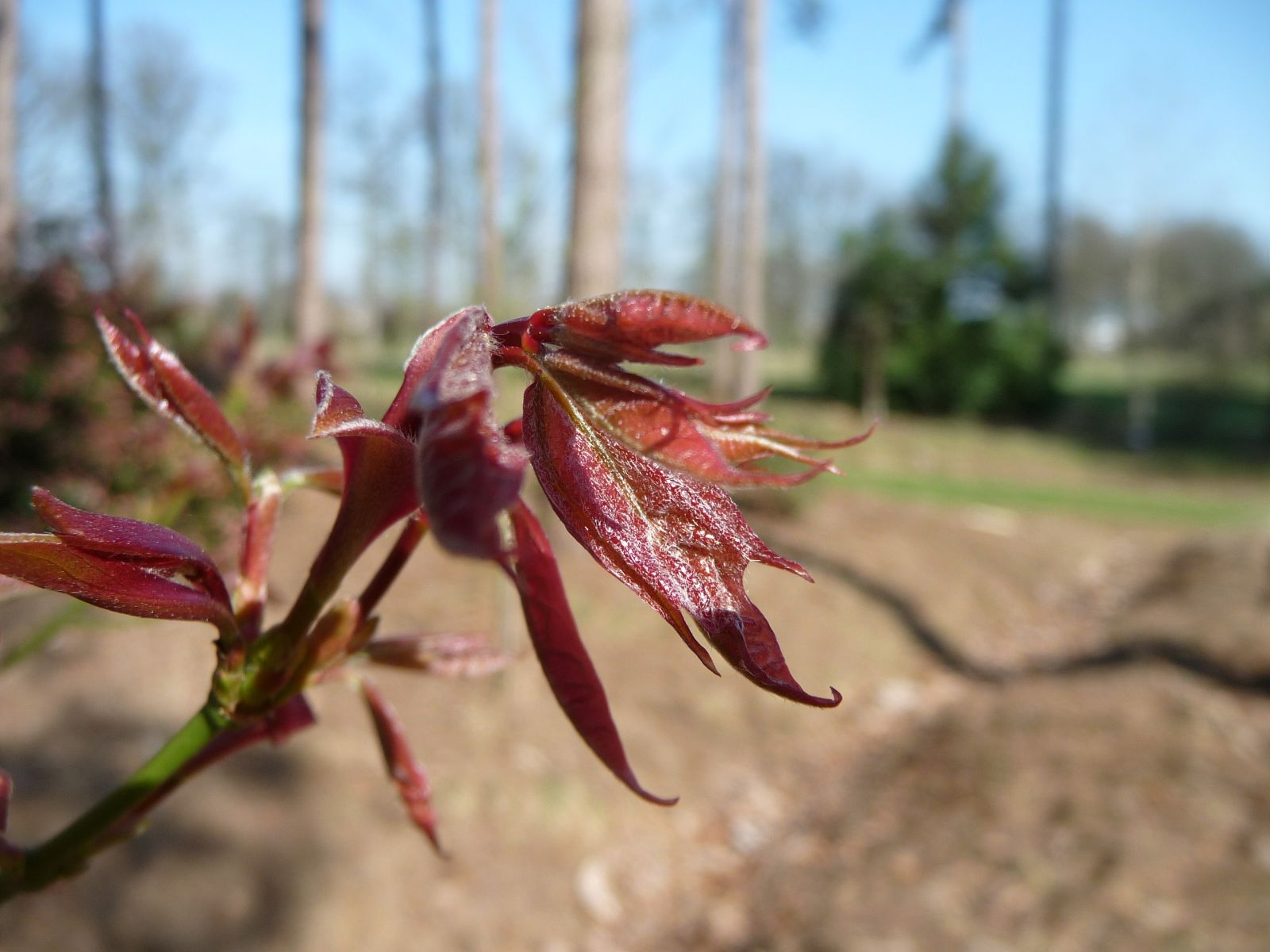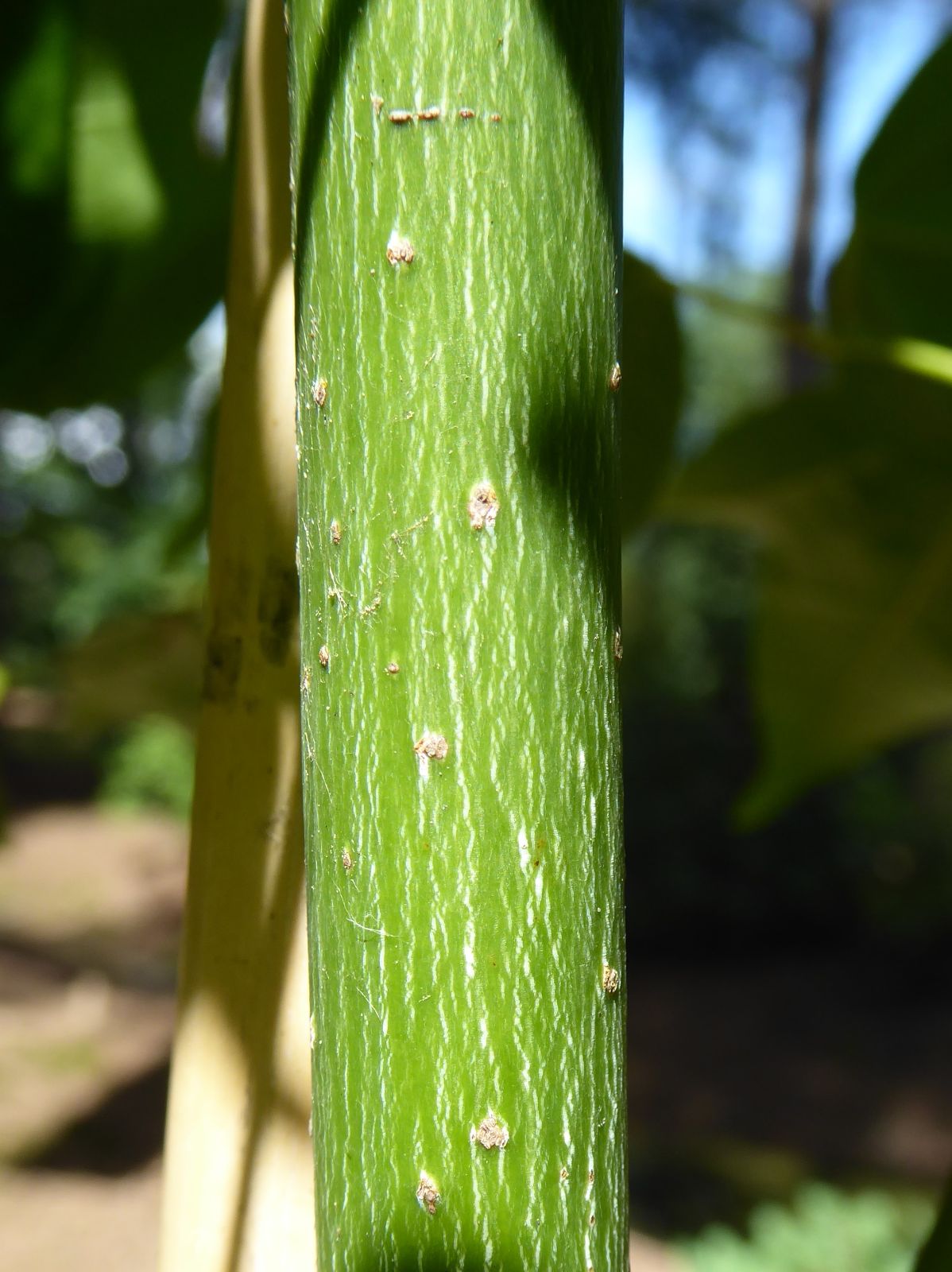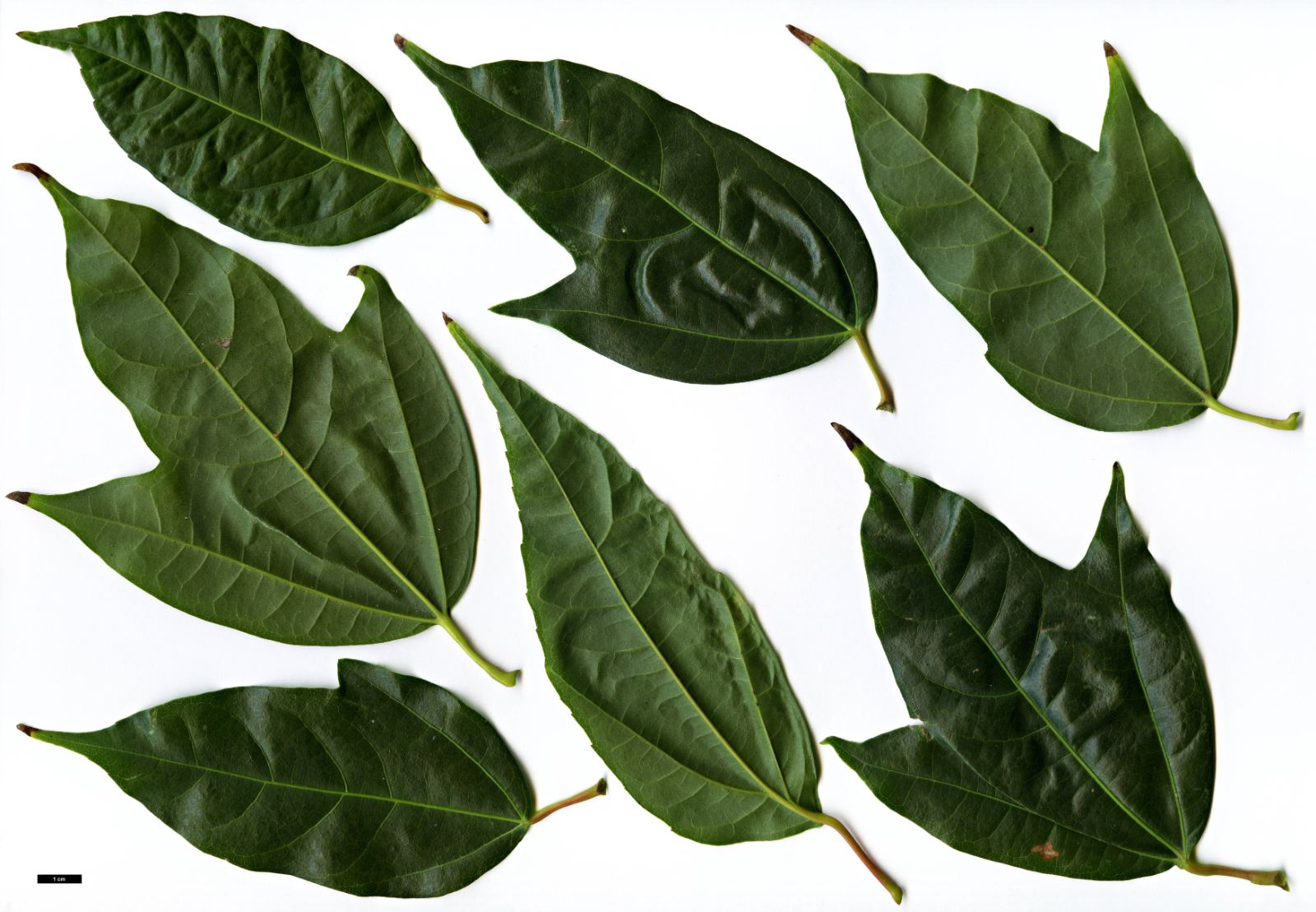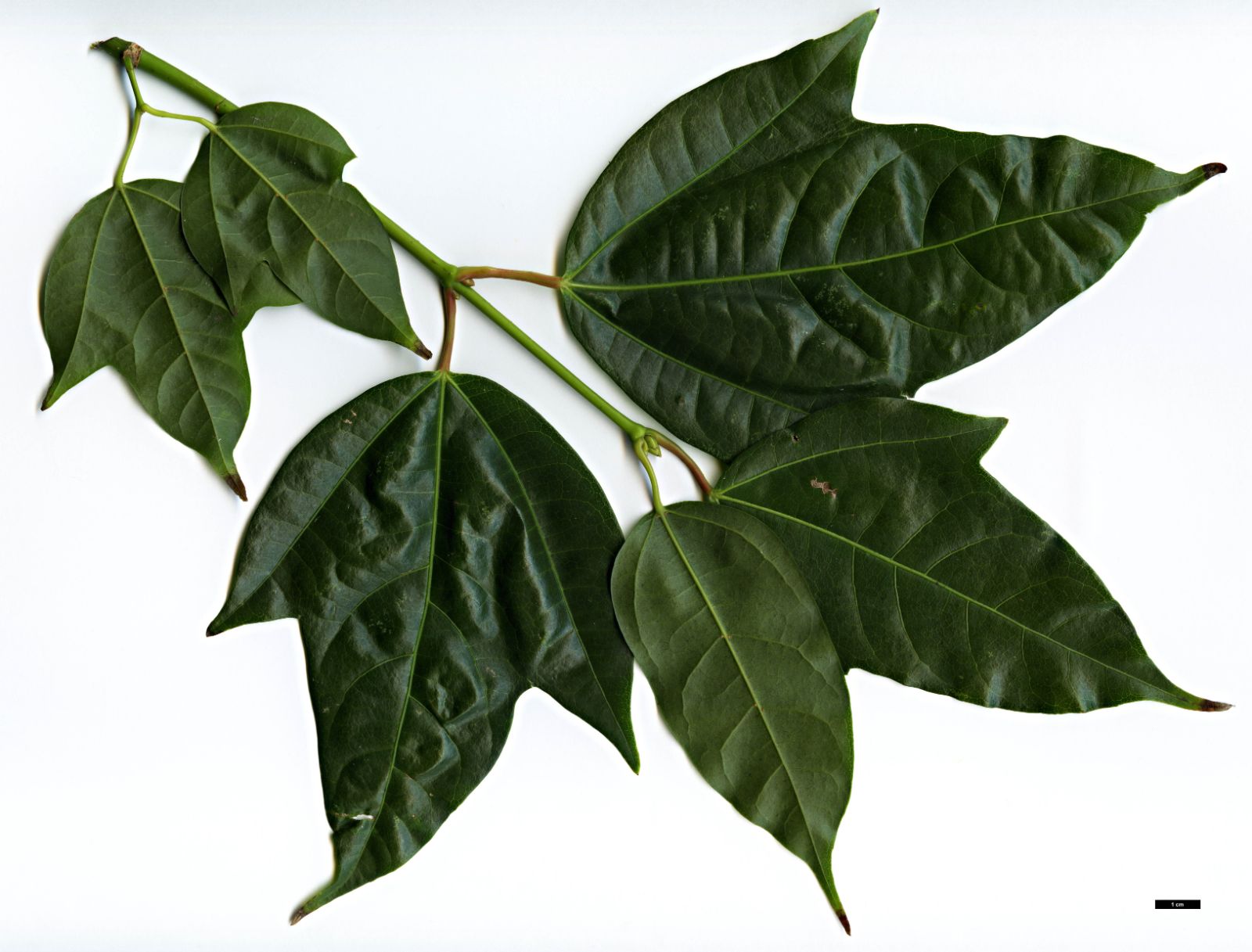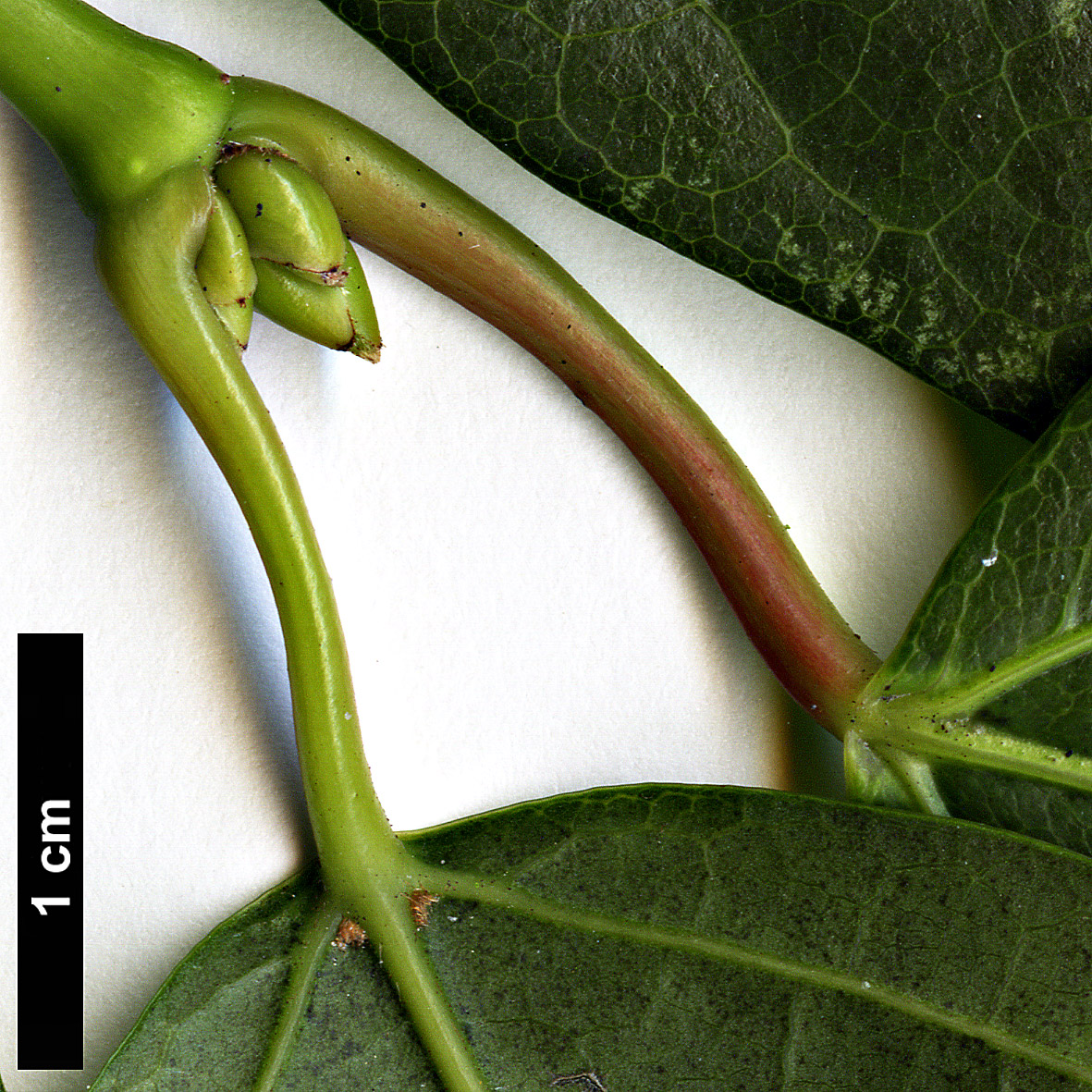Acer calcaratum
Sponsor
Kindly sponsored by
Lawrence Banks
Credits
Dan Crowley (2020)
Recommended citation
Crowley, D. (2020), 'Acer calcaratum' from the website Trees and Shrubs Online (treesandshrubsonline.
Genus
- Acer
- Sect. Palmata, Ser. Sinensia
Synonyms
- Acer craibianum Delendick
- Acer osmastonii Gamble
Other taxa in genus
- Acer acuminatum
- Acer amplum
- Acer argutum
- Acer barbinerve
- Acer buergerianum
- Acer caesium
- Acer campbellii
- Acer campestre
- Acer 'Candy Stripe'
- Acer capillipes
- Acer cappadocicum
- Acer carpinifolium
- Acer 'Cascade'
- Acer caudatum
- Acer ceriferum
- Acer chapaense
- Acer chienii
- Acer circinatum
- Acer cissifolium
- Acer × conspicuum
- Acer cordatum
- Acer coriaceifolium
- Acer × coriaceum
- Acer crataegifolium
- Acer davidii
- Acer diabolicum
- Acer distylum
- Acer divergens
- Acer duplicatoserratum
- Acer elegantulum
- Acer erianthum
- Acer 'Esk Flamingo'
- Acer fargesii
- Acer fenzelianum
- Acer flabellatum
- Acer forrestii
- Acer franchetii
- Acer × freemanii
- Acer fulvescens
- Acer 'Gimborn'
- Acer ginnala
- Acer glabrum
- Acer 'Gold Coin'
- Acer granatense
- Acer grandidentatum
- Acer griseum
- Acer heldreichii
- Acer henryi
- Acer × hillieri
- Acer hookeri
- Acer hyrcanum
- Acer japonicum
- Acer kawakamii
- Acer komarovii
- Acer laevigatum
- Acer laurinum
- Acer laxiflorum
- Acer lobelii
- Acer longipes
- Acer macrophyllum
- Acer mandshuricum
- Acer maximowiczianum
- Acer maximowiczii
- Acer metcalfii
- Acer miaotaiense
- Acer micranthum
- Acer 'Mindavi'
- Acer 'Minorient'
- Acer miyabei
- Acer miyabei × campestre
- Acer monspessulanum
- Acer morifolium
- Acer 'Mozart'
- Acer oblongum
- Acer obtusifolium
- Acer okamotoanum
- Acer oliverianum
- Acer opalus
- Acer orientale
- Acer palmatum
- Acer papilio
- Acer pauciflorum
- Acer pectinatum
- Acer pensylvanicum
- Acer pentaphyllum
- Acer pentapotamicum
- Acer pictum
- Acer pilosum
- Acer pinnatinervium
- Acer platanoides
- Acer platanoides × amplum
- Acer platanoides × truncatum
- Acer × pseudoheldreichii
- Acer pseudoplatanus
- Acer pseudosieboldianum
- Acer pubinerve
- Acer pycnanthum
- Acer rubescens
- Acer rubrum
- Acer rufinerve
- Acer saccharinum
- Acer saccharum
- Acer sempervirens
- Acer 'Serpentine'
- Acer serrulatum
- Acer shenkanense
- Acer sieboldianum
- Acer sikkimense
- Acer 'Silver Cardinal'
- Acer 'Silver Ghost'
- Acer sinense
- Acer sinopurpurascens
- Acer spicatum
- Acer stachyophyllum
- Acer taronense
- Acer tataricum
- Acer tegmentosum
- Acer tenellum
- Acer tetramerum
- Acer tibetense
- Acer tonkinense
- Acer triflorum
- Acer truncatum
- Acer tschonoskii
- Acer turkestanicum
- Acer tutcheri
- Acer ukurunduense
- Acer velutinum
- Acer wardii
- Acer 'White Tigress'
- Acer wilsonii
- Acer × zoeschense
A deciduous tree to 7 m. Bark greenish-grey when young, turning darker with age. Branchlets glabrous, purplish-red or greenish, turning darker. Buds ovoid, with four pairs of scales. Leaves ovate in outline, base subcordate to rounded, 3-lobed, 6–15 × 5–21 cm, lobes broadly ovate, apically acute or acuminate, margins remotely entire, upper surface glossy green, lower surface paler, glabrous except for tufts in vein axils; petiole 2–4 cm long, red, glabrous. Inflorescence, terminal, corymbose, >10 flowered. Flowers 5-merous, usually dioecious, pedicels long and slender, sepals and petals oblong to ovate, sepals red, petals white, petals as long or longer than sepals, stamens eight, inserted inside of the nectar disc. Samaras 4–6 cm long, wings spreading obtusely to nearly horizontally. Nutlets ovoid. Flowering in April, fruiting in October. (van Gelderen et al. 1994; Xu et al. 2008).
Distribution Myanmar China Southern Yunnan Thailand Vietnam
Habitat Moist forests along water courses between 1200 and 2400 m asl.
USDA Hardiness Zone 9-10
RHS Hardiness Rating H2
Conservation status Vulnerable (VU)
This tender tree was introduced from Thailand to Sydney by the Australian botanist and horticulturist Peter Valder, and from there scions reached Plantentuin Esveld in Boskoop, from which source material was distributed to other maple enthusiasts in Europe (J. Harris, pers. comm. 2006). The species survived for a decade at Esveld but was eventually killed by frost, and A. calcaratum was feared lost from cultivation (van Gelderen & van Gelderen 1999), it seemingly not persisting in Sydney. Fortunately this was not the case as it is grown by James Harris at Mallet Court Nursery, in a polytunnel, where it seeds freely and breeds true, enabling it to be made commercially available – and it is also now growing again at Esveld. Young plants are therefore occasional in cultivation, offered periodiically by both Esveld and Mallet Court, though require a warm, sheltered position to prosper. A specimen at Arboretum Wespelaar benefits from a microclimate beneath mature Pinus nigra subsp. laricio, where temperatures can be as much as 5° C warmer than surrounding areas (K. Camelbeke, pers. comm. 2020). A specimen in central Italy was killed in temperatures of –7° C (A. Biagioli, pers. comm. 2020). Though the tree is reported as evergreen, at Wespelaar it is deciduous, appearing evergreen with tough foliage before losing its leaves in autumn (K. Camelbeke, pers. comm. 2020). Its new growth is spectacularly deep red, while its young bark is a vibrant green.

